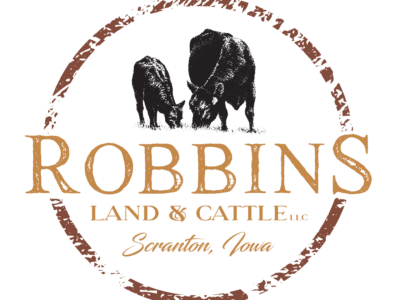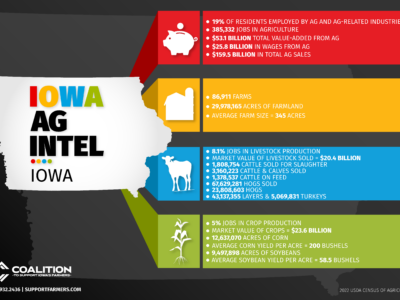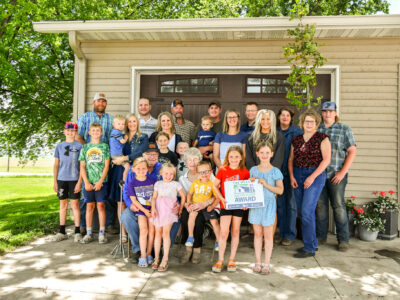Five Tips for Understanding Manure Managment
12-08-2016 in Livestock
WEST DES MOINES, Iowa – December 8, 2016 – Farmers facing tight markets can impact their profitability by understanding the top five criteria in manure management decisions, according to experts at the Coalition to Support Iowa’s Farmers (CSIF) recent manure management workshop.
Over 60 farmers attended the event to learn how to better manage their fertilizer source on and off the farm.
“The first thing you’ve got to do is determine how much manure you need and where it should be applied,” noted Abe Sandquist, founder of Natural Fertilizer Services. Addressing manure needs is a game of building organic matter and maintaining soil fertility. This balance can be achieved by comparing yield history, manure sampling and soil testing.
“Soil testing is kind of like figuring the odds of your fertility,” said Sandquist. “When you’re fertilizing in a low soil test field, you’ve got a higher chance of getting a yield response that’s profitable.”
Secondly, Sandquist said farmers must determine what equipment they will use based on holding capacity, density of their manure source and the range it can be hauled economically.
Dan Andersen, Agricultural and Biosystems Engineering Assistant Professor of Iowa State University, noted that manure management decisions should make manure ‘logistically cheaper to move and more nutrient rich.’
Although solid manure is easier to transport, liquid manure generally retains more nitrogen, especially if it is stored in a deep pit rather than a lagoon. According to Andersen, manure storage systems of the future will likely be designed to retain even higher nutrient levels.
Another component of manure management includes precision application. Thanks to advancements in GPS technology, manure application tools have allowed farmers to better target their acres using variable rate control and yield analyses. The trick to benefiting from these advanced tools also involves optimum timing of application.
“Immediate injection or incorporation will reduce ammonia volatilization and retain 95 to 100 percent of the nitrogen content in the soil,” says Dr. Jim Friedericks, Outreach and Education Advisor at AgSource Laboratories. “Broadcasting or surface application will reduce retention from 70 to 90 percent.”
Lastly, alternative options such as selling manure or composting give livestock farmer’s flexibility in managing their fertilizer source. However, depending on the size of the farm, certain rules and regulations must be followed to ensure land and water resources are safeguarded. Farmers who have questions about these guidelines can contact the Coalition to Support Iowa’s Farmers for a free and confidential consultation.
CSIF is a non-profit organization that assists livestock farmers who want help interpreting rules and regulations, guidance on good site locations for barns, counsel on enhancing neighbor relations and tips on how to protect the environment at no cost. For more information, call 1-800-932-2436 or visit www.supportfarmers.com.
The Coalition to Support Iowa’s Farmers was created by farmers to help farmers raise livestock responsibly and successfully. It’s a joint partnership involving the Iowa Cattlemen’s Association, Iowa Iorn Growers Association, Iowa Egg Council, Iowa Farm Bureau Federation, Iowa Pork Producers Association, Iowa Soybean Association, Iowa Turkey Federation and Midwest Dairy Association.
-30 –
Recommended News

Robbins Family Hosts Cattle Building Open House
Farmers interested in learning about the benefits of raising cattle under roof are invited to attend an open house at the Robbins family farm to tour Justin and Lacie Robbins...
Read More
NEW STUDY SHOWS IOWA AGRICULTURE EVEN STRONGER
Iowa’s 86,911 family farms continue to be a key driver of Iowa’s economy, contributing 32 percent more to the state economy than in 2017, according to a new study commissioned...
Read More
Farming is a Family Affair
The Streit family of West Bend, Iowa, has cultivated their farm for over three decades, fostering a legacy of hard work and community support. Diane and Tony Streit, alongside their...
Read More
